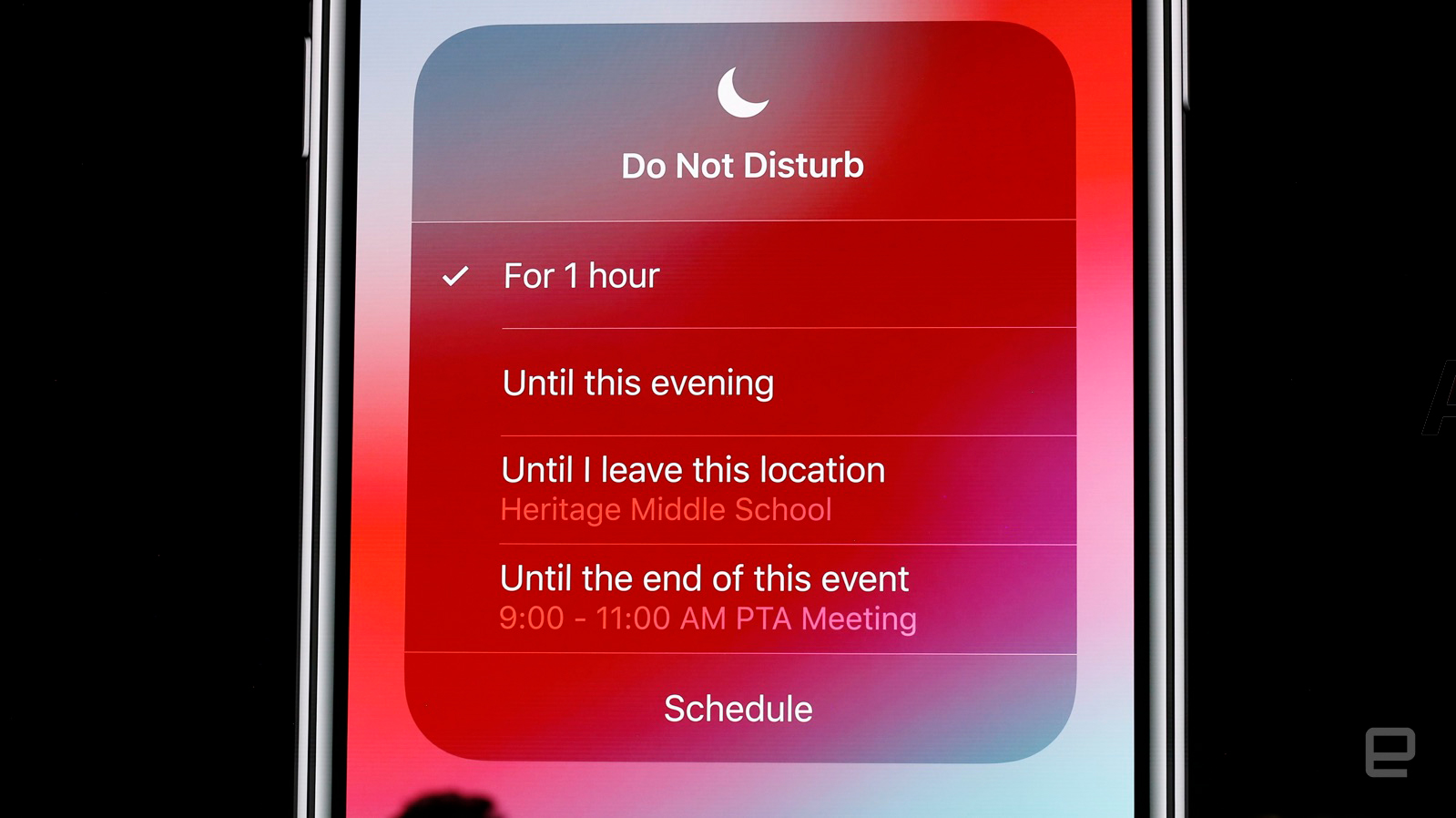 Apple's digital wellness initiative might be well intended, but it doesn't go far enough to combat screen addiction. Sure, the announcement of grouped notifications to reduce lock-screen clutter (and some anxiety) drew rapturous applause from the developers gathered at WWDC, but Apple could've done so much more, even if it meant looking like it was late to the party. Google announced "Wind Down" mode for Android P last month at its I/O developers conference, which turns a display to gray scale as bedtime approaches, in addition to muting notifications. If you've been using Night Shift on iOS and/or your Mac, you know just how much of a difference limiting the amount of blue light your screen emits affects your mental state. Killing the color can have an even bigger impact. Allow me to explain. Four months ago Engadget features editor Aaron Souppourris knew I was looking to fight distractions on my phone and tipped me off that iOS had a built-in grayscale feature. Its intended for folks who are colorblind (the setting is hidden in the display accommodations page). But I have full vision and its potential benefits to everyone are readily apparent. Activated, it cuts down visual clutter dramatically. It's been months since a bright red flag on my home screen has made me forget the original reason I unlocked my phone. Screen Record doesn't pay attention to filters; this GIF has been altered to reflect the feature's actual look. The thing is, activating the feature can be kind of a pain. At first when I was using the grayscale option, I'd have to dive back into the settings and tap through five different menus just because I wanted to scroll through Instagram in full color. I was dedicated, but it was incredibly inconvenient. Then I discovered I could set an accessibility shortcut to the iPhone home button, and go from grayscale to color with a triple-tap. That's right, iOS already has an easy way to activate the feature, and it probably would've been incredibly simple to implement it in the refreshed Do Not Disturb mode. For some reason, Apple just doesn't seem to recognize the value (yet). Apple has shamelessly copied Google Photos for sorting and sharing features, so you've got to wonder why Cook and Co. stopped short with Do Not Disturb. 
Your phone is designed to make you look at it, and app designers labor tirelessly over what color choices will be both pleasing to the eye and hold your attention. It's why red notification flags are so ubiquitous in our digital lives. When the next version of Android is released, not only will it tackle how often your phone buzzes in your pocket, but how it visually stimulates your brain, too. As someone who's operating their phone in Do Not Disturb all day with grayscale turned on, I can say it's made a bigger difference for me than Night Shift or iOS' bedtime reminder ever did. iOS 12 will also offer a dashboard similar to Google's that gives you a window into how much you've used each app. Time "allowances" for apps are incredibly welcome, but can easily be pushed away without any form of punishment. Well, aside from knowing that your will is weak and you lack self-control.  iOS 12's screen-time dashboard. Chris Velazco/Engadget Ideally, Apple's new Do Not Disturb would live in its Health app, which aggregates wellness and fitness data from a smattering of sources. It already has a section for mindfulness, counting meditation minutes from apps like 10% Happier (which got a shoutout on stage yesterday). Given that HealthKit exists solely to give you a comprehensive view of your overall wellness, and the revamped Do Not Disturb mode aims to clear away distractions from your phone, it'd be a perfect fit. But that apparently isn't how Apple sees it. Instead of offering a broad way to combat screen addiction, or stronger controls and rewards in general, Apple's attempt strikes as a half-baked game of catch-up with one of its biggest rivals. The company is confident enough with its skill at gamifying fitness that it brought out a spokeswoman to teach a spin class on stage yesterday, who simultaneously rode an exercise bike while demoing the Watch's new features for trash talking your less-active workout friends. Apple could just as easily bring goal-oriented aspects like that to its Do Not Disturb mode, and reward you for things like not exceeding app allowances, or for cutting down on phone use. For all it's saying about screen addiction, though, this half measure almost suggests Apple doesn't actually want you to use your phone less. Follow all the latest news from WWDC 2018 here!
via Engadget RSS Feed https://ift.tt/2sHiDx3 |
Comments
Post a Comment